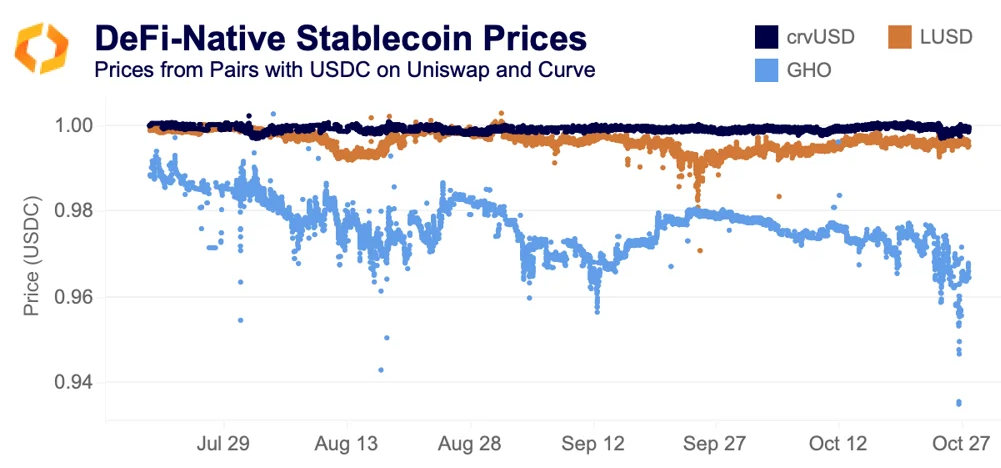A summarizing review of what has been happening at the crypto markets. A look at trending sectors, liquidity, volatility, spreads and more. The weekly report in cooperation with market data provider Kaiko.
Bitcoin is still trading at 16-month highs on the back of ETF speculation, diverging sharply from equity markets. Last week, SBF took the stand in an unusual turn of events while the FTX estate began evaluating offers to restart the exchange.
Breaking down bitcoin's rally
For the first time in six months, we've observed a real shift in market structure. All summer long, trade volume was low, volatility even lower and markets seemed stuck in a rut. That all changed two weeks ago with a false rumor about a bitcoin ETF.
While there is still no confirmation of a spot-based ETF, markets seem to not care, propelling BTC to its highest level since May 2022. This is a significant date because it is what we consider to be the official end of the last bull cycle, triggered by the collapse of Terra. As prices soar, trade volume has followed, hitting six month highs on October 24.
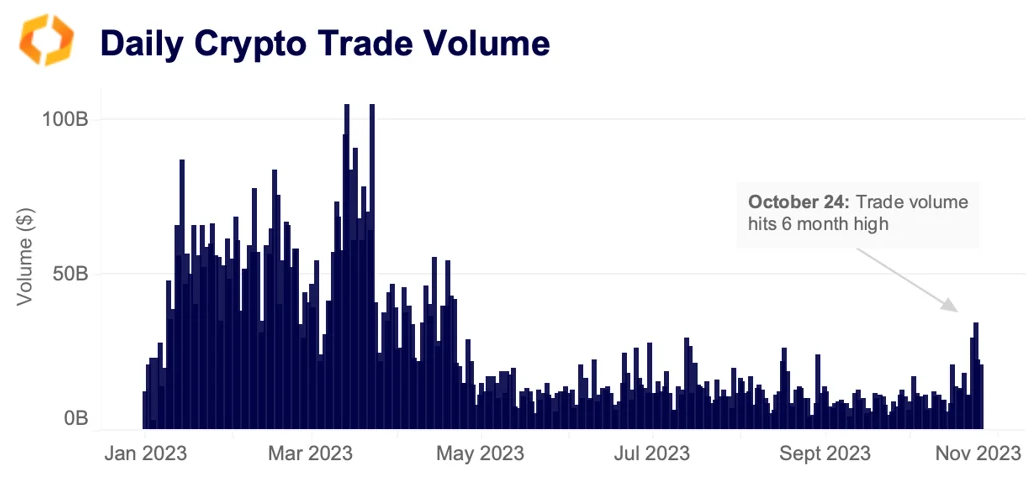
It's not just BTC that has benefitted, altcoins have also seen a similar surge in volume, which last week climbed past $15bn on centralized exchanges.
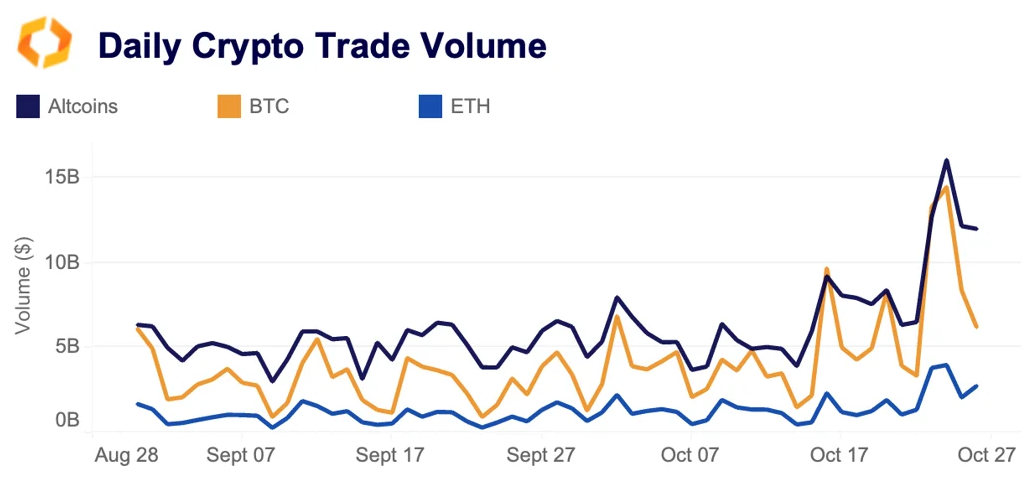
Yet, liquidity remains unchanged despite the increase in trading activity, suggesting the rally has not been enough to change market makers' behavior just yet. Bitcoin market depth - which measures the quantity of bids and asks on order books within 1% of the mid price - has remained flat over the past two weeks, at around $100mn.
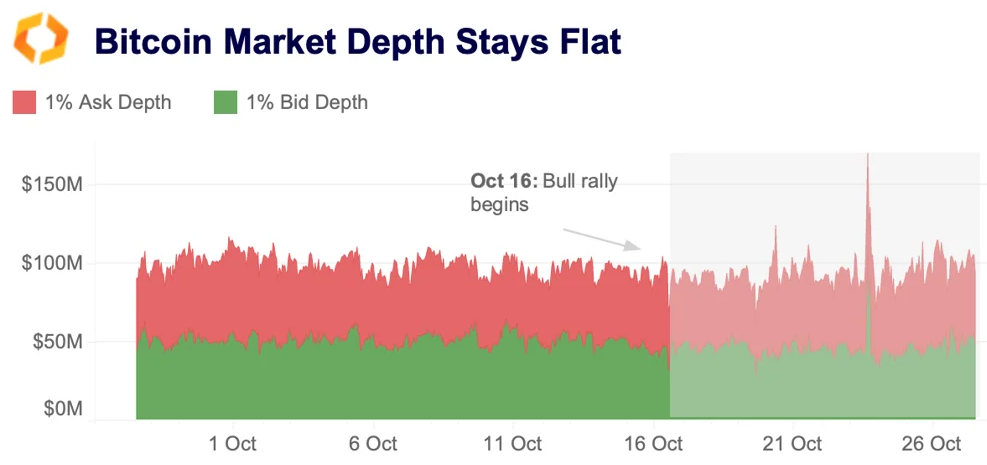
Derivatives markets have perhaps seen the largest impact. Funding rates for perpetual futures markets have flipped positive across exchanges for the first time in months, suggesting a bullish bias. Open interest is also slowly rebuilding after a wave of liquidations during the initial price surge.
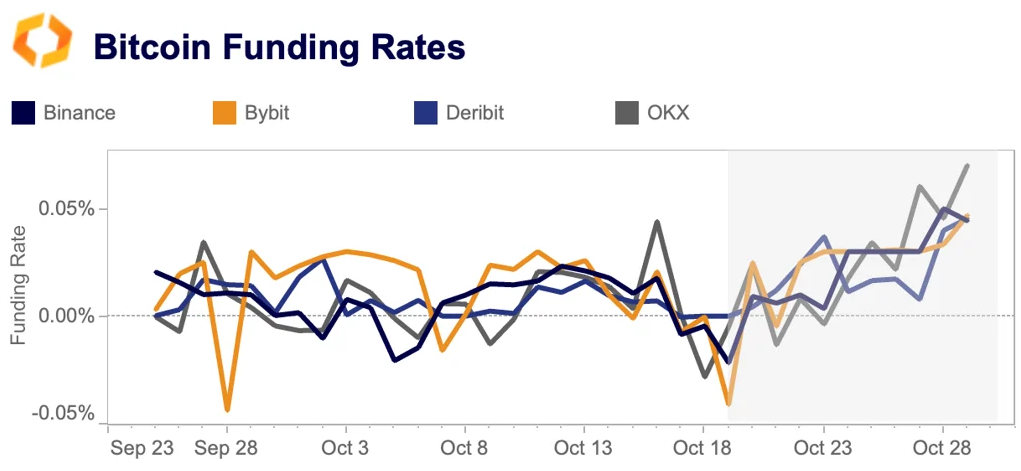
For the first time in months, we have also observed a consistent surge in implied volatility (IV). The chart below shows the change in IV for at-the-money options at various expiries. IV for expiries in the next two weeks has grown the most, from 35% to 56% in the span of just a week. Notably, the IV gap between November expiries and December 29 expiry has collapsed from 7% to virtually 0%.
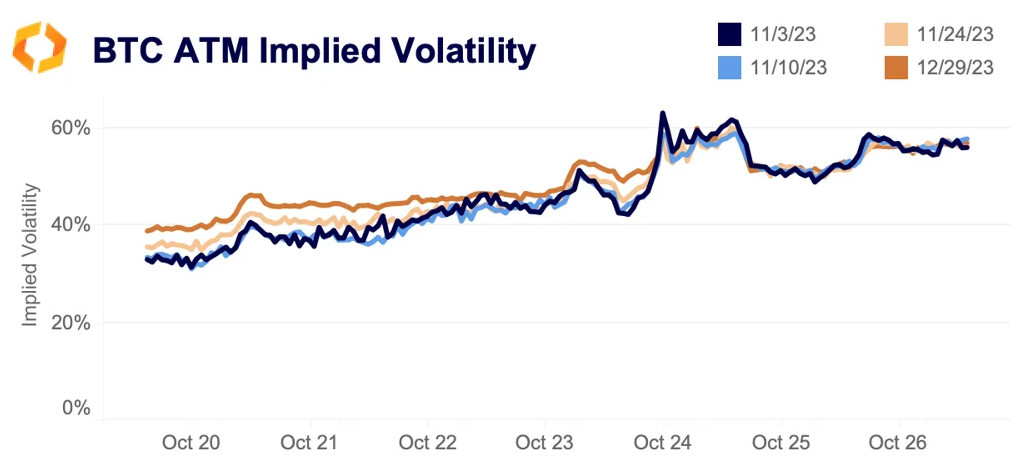
This indicates that the market is expecting near-term volatility without any significant vol-inducing catalysts in the month of December. Notably, the next deadline related to a spot BTC ETF comes in January, when the SEC is due to rule on ARK & 21Share's application.
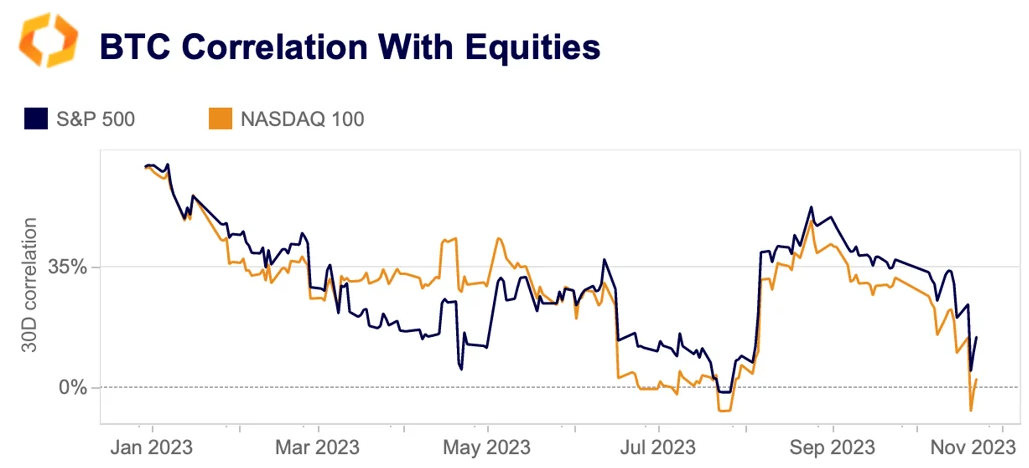
Finally, BTC's correlation with the Nasdaq 100 index has dipped into negative territory for the first time since July. Over the past few weeks, equity markets have sold off amid ongoing turmoil in the Middle East. The strong divergence between crypto and traditional markets caps a growing trend we've observed since the FTX collapse.
Number of delisted markets hits new high
Low volume and liquidity can pose a challenge for exchanges to maintain hundreds of active spot markets. Since the start of 2023, we have observed an increase in the number of delisted and inactive spot instruments on centralized exchanges, which recently hit all time highs above 3.5k.
The trend is not as dire as it seems, simply because from 2021 - 2022, there was a massive expansion in the number of traded instruments as exchanges raced to capitalize on the bull market. With a global drop in liquidity and prices, it's normal to observe a corresponding drop in traded instruments.
crvUSD continues to remain stable
Curve Finance's stablecoin - crvUSD - has been a rare source of activity amidst the bear market, which hit DeFi protocols especially hard. Just a few months after release, crvUSD's market cap breached the $100mn threshold and today stands at about $125mn, compared to the DeFi-native stablecoins LUSD at $225mn and GHO at $25mn.







